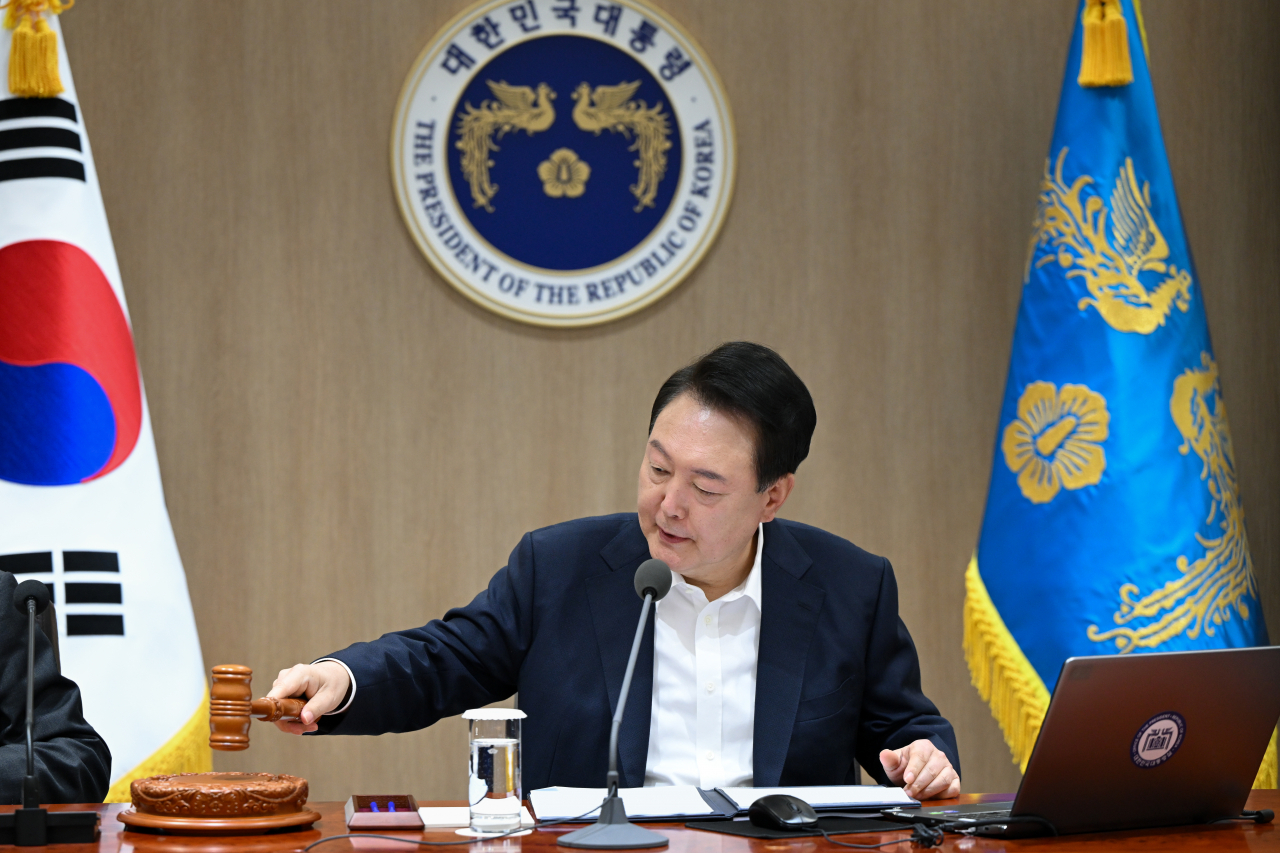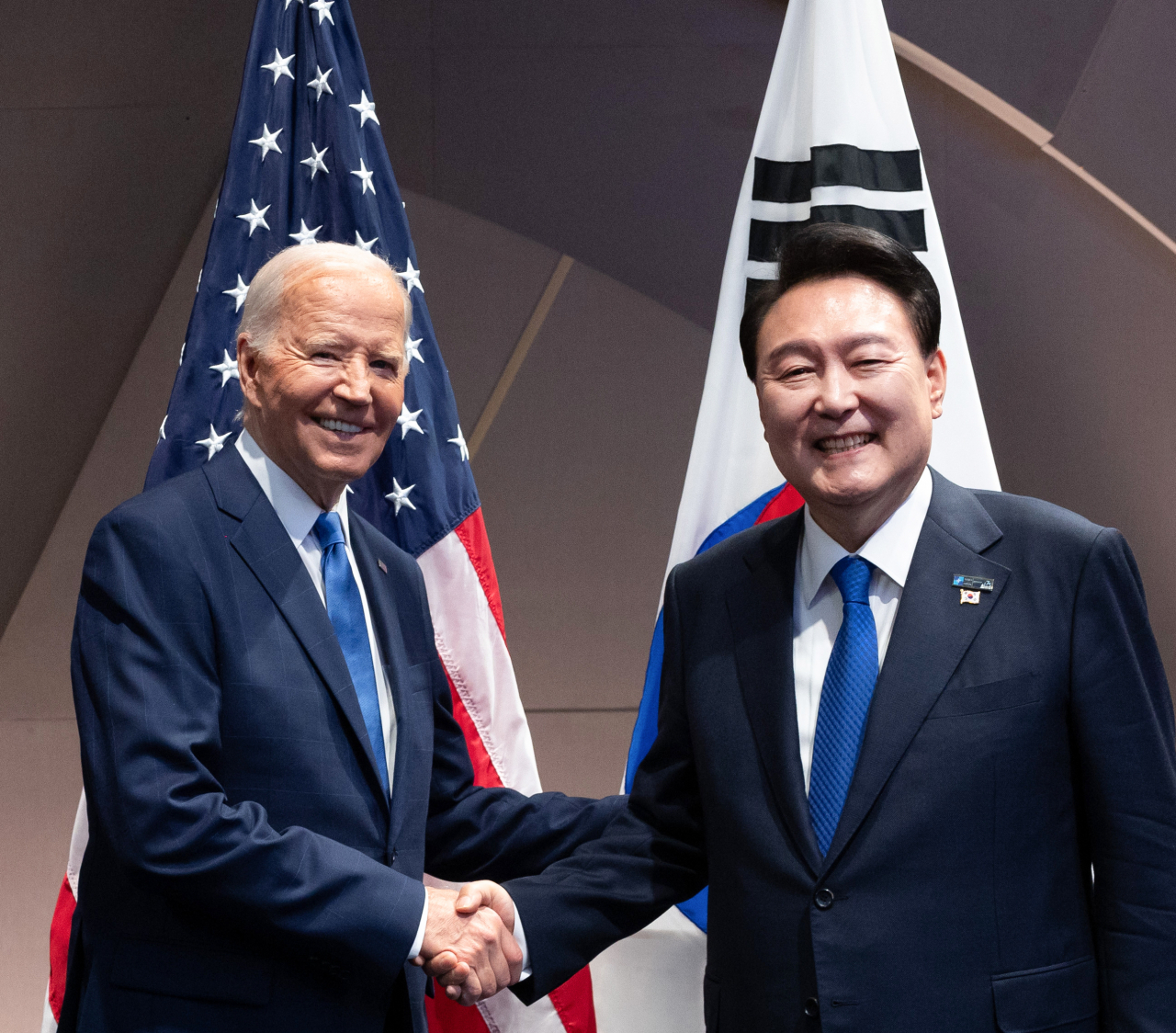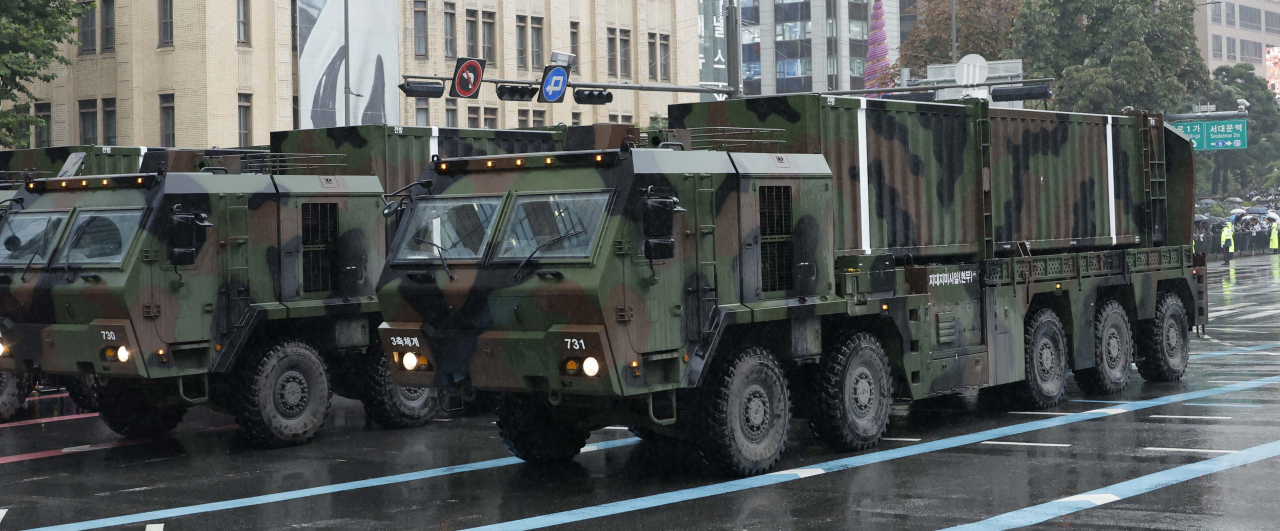 |
President Yoon Suk Yeol bangs the gavel to open a Cabinet meeting at the presidential office in Seoul on Tuesday. (Yonhap) |
South Korea's Cabinet on Tuesday approved a proposed presidential decree to establish a strategic command aimed at effectively countering North Korea's increasingly sophisticated nuclear and missile threats, according to the presidential office.
South Korea's strategic command will also play a central role in integrating the country's advanced conventional forces with US nuclear forces, thereby strengthening integrated deterrence between the treaty allies against potential North Korean attacks.
"The strategic command is a joint force designed to deter and counter North Korea's nuclear and weapons of mass destruction (WMD) attacks through the integrated operation of our advanced military capabilities," President Yoon Suk Yeol said during a Cabinet meeting.
"The newly established strategic command will be the centerpiece of the Korea-US integrated extended deterrence and play a key role in keeping our people safe from advanced North Korean nuclear threat," Yoon added.
Yoon also called for accelerating the establishment of the command following the Cabinet's approval.
According to the Defense Ministry, if the presidential decree on the establishment of the strategic command is promulgated on Aug. 6, it will "lay the legal foundation" for the command's creation.
"The Defense Ministry will complete the reinforcement of skilled personnel, facility construction, and the establishment of the command and control system in a timely manner to establish the strategic command in the latter half of this year," the ministry said.
 |
South Korean President Yoon Suk Yeol (right) and US President Joe Biden shake hands during their meeting held on the sidelines of the North Atlantic Treaty Organization (NATO) summit held in Washington D.C. on July 11. (Pool photo via Yonhap) |
Conventional nuclear integration
South Korea's strategic command will "develop and implement the concept and plans for the conventional nuclear integration (CNI) of Korea and the US in coordination with key units, including the US strategic command, and take the lead in conducting associated training and exercises," according to the Defense Ministry.
In a nutshell, CNI means the integration of US nuclear forces with South Korean advanced conventional forces to strengthen the US extended deterrence against escalating North Korean threats.
South Korea and the US signed the "Guidelines for Nuclear Deterrence and Nuclear Operations on the Korean Peninsula" as a foundation for the CNI on July 11 on the occasion of the NATO summit.
"With the introduction of the CNI concept, establishing the strategic command is considered essential to serve as a suitable counterpart to the US strategic command," a South Korean military official, speaking on condition of anonymity, explained during a closed-door briefing on Monday.
The official also said, "Once the strategic command is established, it will take on the role of leading the tabletop exercises" for CNI as the counterpart to the US strategic command.
The command will also assume "responsibilities including preparation, planning, joint execution and information sharing for exercises" involving US strategic assets deployed on the Korean Peninsula, the official explained. The command will participate in the Korea-US Nuclear Consultative Group as a stakeholder.
 |
The "high-power" bunker-buster Hyunmoo ballistic missiles are displayed during a military street parade on Tuesday in downtown Seoul, commemorating the 75th anniversary of Armed Forces Day which falls on Oct. 1, 2023. (Korea Herald - Joint Press Corps) |
Strategic response
The Defense Ministry said that the command's primary mission is to "deter and respond to enemy nuclear attacks and strategic-level WMD threats by integrating the military's strategic capabilities," including crucial assets such as the high-power Hyunmoo series missiles, stealth fighters and 3,000-ton submarines.
"As North Korea's nuclear and WMD threats become increasingly sophisticated, it is essential to prioritize swift and effective responses through integrated and synergistic operations led by the Joint Chiefs of Staff, rather than maintaining the autonomy and independence of each military branch," the unnamed official explained. "In this context, the establishment of the strategic command is significant."
South Korea is the second non-nuclear state, after Saudi Arabia, to establish a dedicated strategic command.
South Korea's strategic command will operate under the command and supervision of the Chairman of the Joint Chiefs of Staff during both wartime and peacetime.
The first commander will be an Air Force Lt Gen. Subsequently, the position will rotate between three-star generals from the Army, Navy, and Air Force.
The command will also maintain a cooperative and supportive relationship with the existing Korea-US Combined Forces Command.
According to the Defense Ministry, phase one will involve organizing key units essential for the operations of CNI and "massive punishment and retaliation" strategies within the command. In phase two, the focus will expand the command's scope to include new military domains such as space, cyber and electromagnetic spectrum operations.
Joung Kyeong-woon, a senior research fellow at the Seoul Defense Forum, emphasized that it is "desirable to choose the US Strategic Command as a counterpart."
"As a non-nuclear state, we can carve out a meaningful role within the CNI framework, with our strategic command leading the effort in planning an integrated deterrence system," he said.
Joung further stressed, "It's crucial to rapidly develop the capabilities needed for executing strategic functions and to cultivate specialized skills and strategies in the Korean theater to become an effective counterpart to the US strategic command."
However, Joung noted a potential challenge: "The capabilities require long-term development, and our rotational personnel system would present a significant obstacle."







![[Herald Interview] How Gopizza got big in India](http://res.heraldm.com/phpwas/restmb_idxmake.php?idx=644&simg=/content/image/2024/11/20/20241120050057_0.jpg)